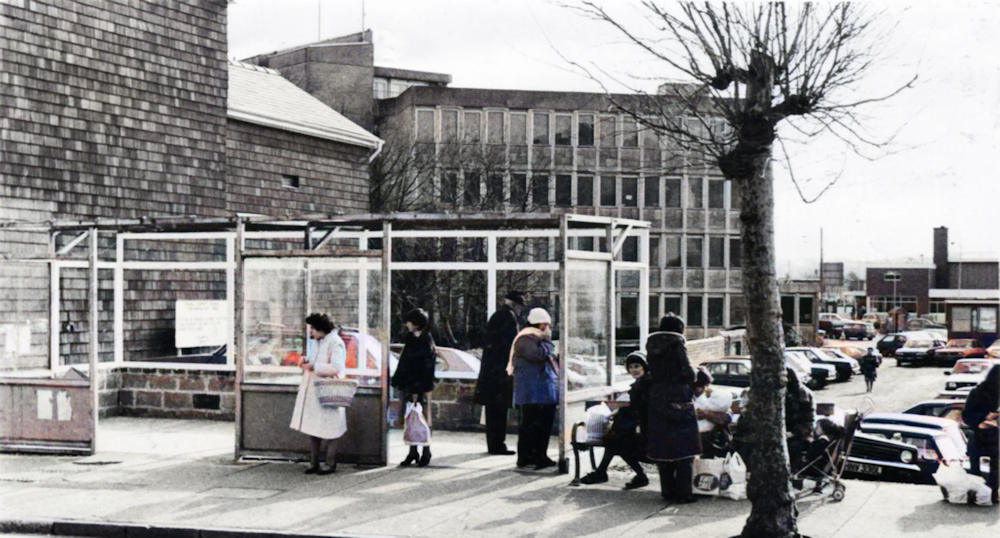For decades the mistakable outline of the County Theatre dominated Picton Place and the riverside just below the New Bridge. Cardiff based Howard Williams was the architect who designed the County Theatre and also oversaw the construction. During the construction period and at the time 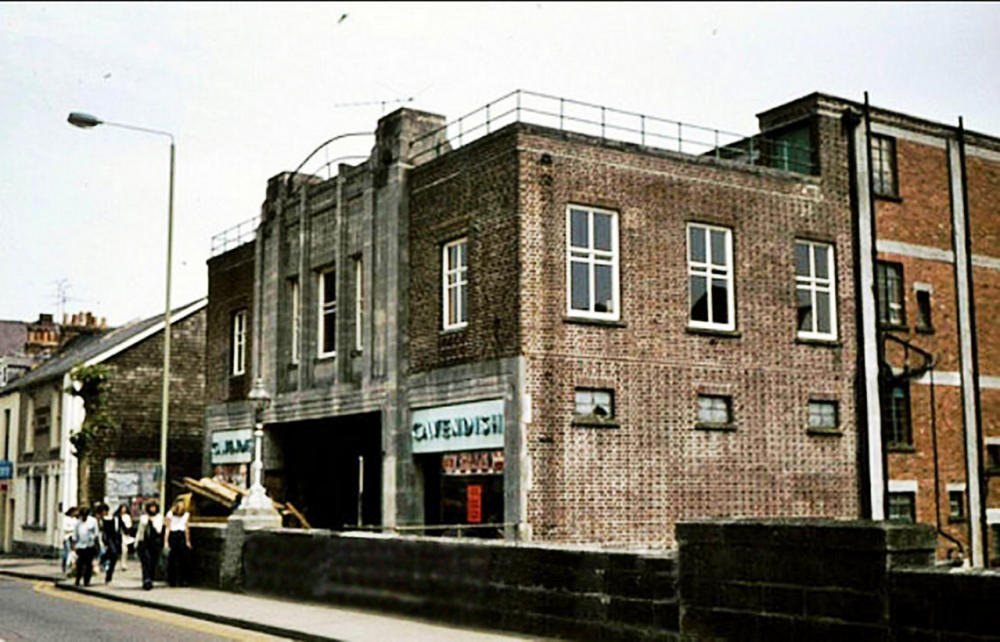 it opened it was heavily criticised as a “luminous red-brick monstrosity” but it soon became part of town life and in the years that followed it was the venue many live shows as well operating as a cinema.
it opened it was heavily criticised as a “luminous red-brick monstrosity” but it soon became part of town life and in the years that followed it was the venue many live shows as well operating as a cinema.
Capable of accommodating up to 1,200 people it was purpose designed as a theatre complete changing rooms, an orchestra pit, cinema projection room and a very tall fly-tower; in addition it had a snooker hall and restaurant. The grand entrance with its terrazzo floor was flanked by the Cavendish Furniture showrooms. At the rear of the building there was, for a time, a small BBC studio used by reporters in West Wales to submit radio reports.
In addition to hosting plays and revues it also staged concerts featuring world famous performers such as Paul Robeson who appeared there in 1938. Live performances remained popular after the Second World War with shows ranging from revues like “This was the Army” and “Les Fleurettes” to the Don Ross Imperial Circus, and seasons of repertory plays from companies such as Harry Hansen’s.
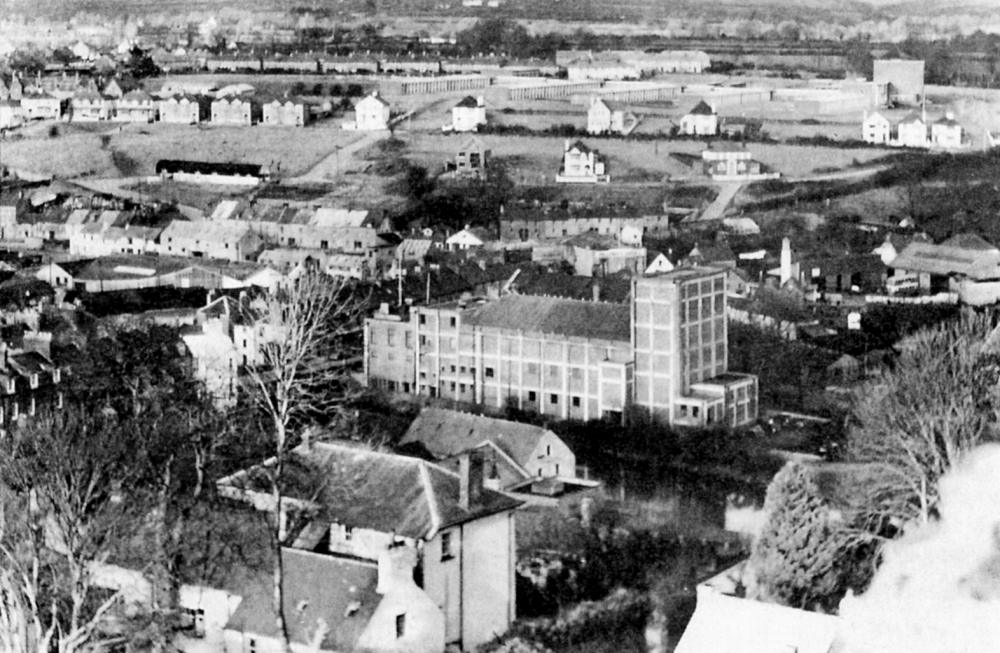 But from the mid-fifties onwards the number of live performances started to decline and by November 1957 a newspaper review stated “Last week Haverfordwest County played its first Variety Bill for a long time with Gladys Morgan and her family, The Zodiacs, Eddie Fox and Beryl, Idris and Belle. The Sensational Shermans, Lorne Leslie, the Geddes Brothers, and Revel & Janetta.”
But from the mid-fifties onwards the number of live performances started to decline and by November 1957 a newspaper review stated “Last week Haverfordwest County played its first Variety Bill for a long time with Gladys Morgan and her family, The Zodiacs, Eddie Fox and Beryl, Idris and Belle. The Sensational Shermans, Lorne Leslie, the Geddes Brothers, and Revel & Janetta.”
Pantomime had become an annual staple and became an established part of the Christmas family celebrations for local people. In 1948-49 the production was ‘Aladdin’ with Sandy Powell and the following year it was ‘Cinderella’; 1958-9 saw the production of ‘Dick Whittington’ with Alan Gale and Sandra Wells; and the 1959-60 “Jack and the Beanstalk” with Molicia performing her fountain act.
For many years the basement of the building was home to the Lucania Billiards Hall known locally as ‘The Luke’. Established as a temperance billiards hall during the 1920s in Romford the original hall spawned Lucania Temperance Billiard Halls Ltd. and spread across the southern Britain. By the early 1960s interest in billiards and snooker was waning and the tables were sold and the basement became The Quay Club which was a coffee bar/disco and then later became a nightclub called The Waterfront.
The snooker tables were sold to John Thomas who then opened The Old Quay Snooker Club which, incidentally was also a teetotal establishment.
Although controversial when built there was much sadness when the County Theatre was demolished but perhaps  not so much for the loss of the building (it could never be claimed to have improved the appearance of Haverfordwest) but for what the loss represented – a substantial theatre equipped for all sorts of live performances as well as a cinema. By the late 1970s it had not been used as a cinema for several years being utilised instead as storage for building materials. Ultimately the end of live performances, the decline in cinema attendances during the video boom of the 1970s, and the shear scale of a building with a capacity of more than a thousand all contributed to the closure of The County Theatre.
not so much for the loss of the building (it could never be claimed to have improved the appearance of Haverfordwest) but for what the loss represented – a substantial theatre equipped for all sorts of live performances as well as a cinema. By the late 1970s it had not been used as a cinema for several years being utilised instead as storage for building materials. Ultimately the end of live performances, the decline in cinema attendances during the video boom of the 1970s, and the shear scale of a building with a capacity of more than a thousand all contributed to the closure of The County Theatre.
It was demolished in the early 1980s and for a few years the site lay fallow used only as an overflow car park for Cambria House until a new council office block was built in 1986.
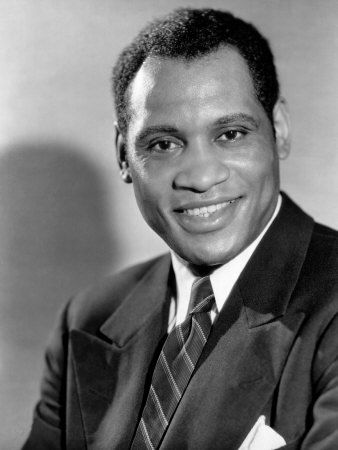 Pembrokeshire has had its fair share of celebrity visits over the years, but one which was talked of and savoured for decades afterwards was the visit of the American singer Paul Robeson to Haverfordwest’s County Theatre in 1938.
Pembrokeshire has had its fair share of celebrity visits over the years, but one which was talked of and savoured for decades afterwards was the visit of the American singer Paul Robeson to Haverfordwest’s County Theatre in 1938.
The County Theatre had been a proud acquisition for the county town since its opening in 1935. It fed the town’s cinema goers their regular diet of the time’s Hollywood stars: Greta Garbo, Charles Boyer, Katherine Hepburn, Shirley Temple, Fred Astaire, Ginger Rogers and the rest. The County mingled these films with occasional live performances, but the live performer due on Sunday, 1st May 1938, was an exceptionally distinguished one. Paul Robeson, the black bass, was a Hollywood star of the very first rank and the singer of numerous popular favourites like ‘Shenandoah’, ‘Go Down Moses’ and ‘Ol’ Man River’.
His visit clearly aroused a huge stir among a Pembrokeshire population who would have been, in the 1930s, so very, very far from meetings with Hollywood’s great and good and who probably, in most cases, had never even seen a black person. Robeson arrived in Fishguard initially, to rapturous greetings, with crowds out in the streets to welcome him. He immediately enchanted his hosts by walking among them, talking to small children and signing autographs. Later, as his car came through Prendergast on its way into the county town, he received another wildly enthusiastic welcome. Then, once again, outside the County Theatre, he was surrounded by autograph hunters and well-wishers and, again, delighted the crowds with his warmth and charm.
The supporting artistes in that night’s programme were Isobel Baillie, who sang a selection of Handel airs, and a Milford schoolboy called Wally Walters, later to be music master at Milford Haven Grammar School and conductor of the Liverpool Philharmonic. And yet of course, centre stage that evening, in every sense, was the famous Robeson, singing all of his familiar range of spirituals and ballads, and concluding with ‘Ol’ Man River’.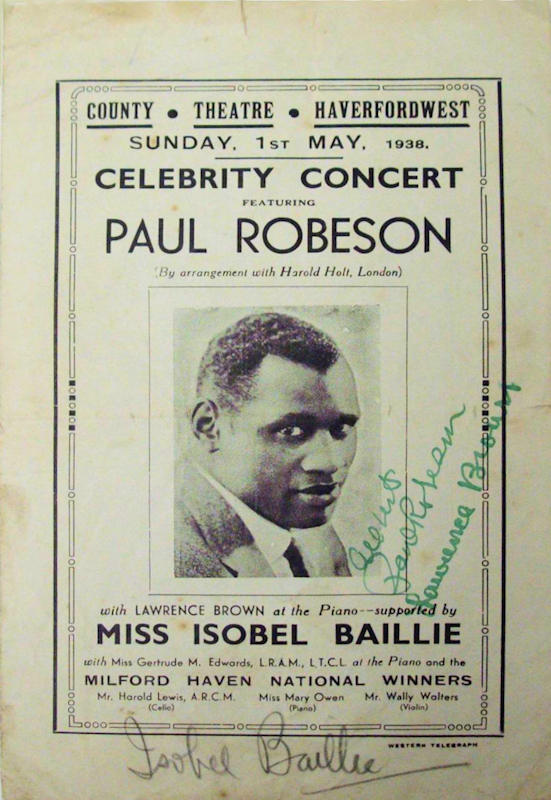
There is just the one extraordinary twist to the story. The theatre was half-full. The organisers, Haverfordwest Football Club, had over-priced the event badly, in days of very low wages, and tickets just had not sold. Whereupon Robeson, who would certainly have been a very wealthy man, now showed himself to be a very generous man also. He wrote the organisers his cheque for seventy-five pounds, a quite massive sum in 1938.
It’s a wonderfully touching story, this happy meeting of two quite different cultures, at a time when the world was about to be rent by one of the worst racial and nationalist conflicts of all time. Here, in Pembrokeshire, a black American, a Hollywood star and yet the descendant of an enslaved people, was prized and loved for an evening by the people of a remote, internationally unheard-of market town.
by Robert Nisbet
The name Portfield is thought by some to be a corruption of Poor Field (a field which all could use) but in the late 13th century it was referred to as Portefelde and has also been known as le Portefeld, Poertefyld, Portfilld, le Portffeld, Portfeild, Porfeild and Portfild.
B G Charles in his seminal work on Pembrokeshire place names believed its meaning was ‘Open field belonging to the town (of Haverfordwest)’ v. port, field
Internally the ground floor of the fish and butter market had a vaulted ceiling supporting the upper storey Sadly the building was demolished in 1951 as part of the "improvements" made to faciltate an increase in motor vehicles.
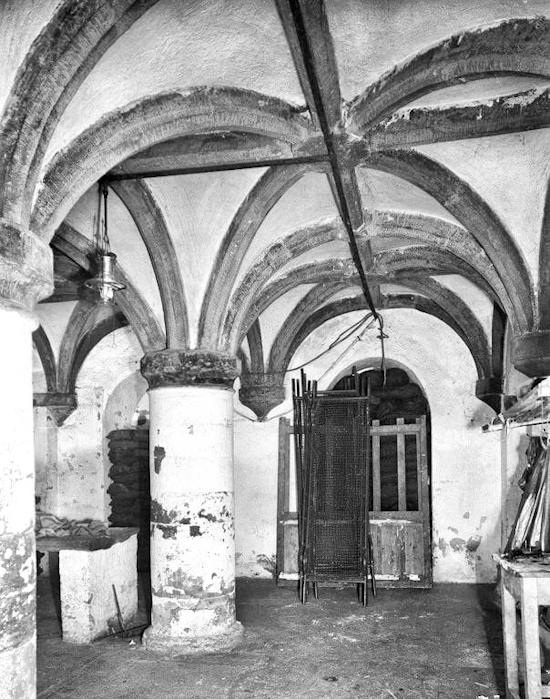
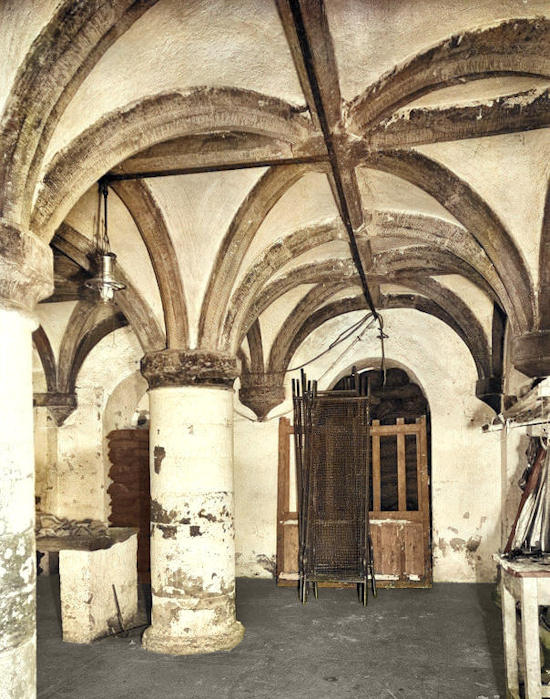
View full size black & white or colour
If you would like to get in touch you can:


